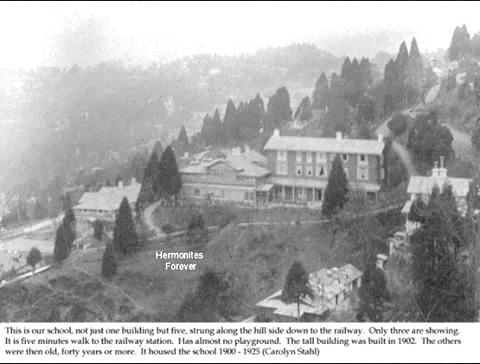Sorry, Obama, the System Is Rigged
Trump is right: Elections
favor the rich and powerful
By Michael Sainato •
08/10/16
During a press conference last week, President Barack Obama called Donald
Trump’s recent claims that the general election will be rigged, “ridiculous.”
The retort is the latest attack on Trump from Obama, who has emerged as the
Clintoncampaign’s spokesperson while Hillary Clinton herself makes low key
campaign stops in swing states like Pennsylvania and Florida.
In January, Obama touched upon what Trump was trying to get at when he
said the general election will be rigged. But to Obama, this critique is merely
about Americans’ interpretations, not the facts.
“Democracy breaks down when the average person feels their voice doesn’t
matter, that the system is rigged in favor of the rich or the powerful or some
narrow interest,” Obama said during his final State of the Union speech. “Too
many Americans feel that way right now. It’s one of the few regrets of my
presidency—that the rancor and suspicion between the parties has gotten worse
instead of better.”
Denigrating these suspicions as “ridiculous,” despite who said them,
isn’t going to do anything but exacerbate these attitudes. And mocking Trump
for connecting on one of the biggest issues he can attribute his popularity to
will only increase his support.
Although Trump failed miserably to articulate what exactly he meant by
“rigged,” he still touched upon an attitude with which millions of Americans
widely agree. The sentiment that elections and the system that runs them is
rigged has emerged as the issue with the most bipartisan support this election
year. A 2015 Gallup poll found trust in the media is at a historic low. A 2015
survey conducted by the Pew Research Center found trust in the government is
similarly bottoming out.
The political reality and the ideals of everyday Americans are at such
odds because of the influence big money has on democracy. This political
polarization directlycorrelates to broadening income inequality. The growing
animosity toward the political system has popularized anti-establishment
sentiments across the ideological spectrum. Since the 2008 economic recession,
nearly 99 percent of all new income has gone to the wealthiest one percent of
Americans. Middle and working class Americans have seen their wages remain
stagnant while the wealthy have grown richer.
The 2011 Citizens United Supreme Court decision opened the floodgates for
wealthy donors to provide their candidates of choice with unlimited campaign
contributions. The power and influence every American citizen is provided in
the right to vote has been stripped of its inherent bargaining power.
Clinton has profited off of this rigged system more than any other
candidate this election. She managed to raise more money than Sen. Bernie
Sanders’ grassroots campaign with the use of SuperPACs, including a
controversial joint fundraising committee with the Democratic National
Committee (DNC), which laundered money to the Clinton campaign. The Wikileaks
and Guccifer 2.0 releases revealed that the DNC strategized and actively worked
on behalf of the Clinton campaign while working against Sanders.
The Democratic National Convention was privately funded for the first
time, while the donors are still hidden in anonymity by Democratic Party
leaders. Despite accusations of favoritism and corruption over former DNC chair
Debbie Wasserman Schultz’s leadership as early as September 2015 from Sanders
supporters, no remedy was provided until after Clinton secured the nomination.
As soon as Wasserman Schultz resigned, Clinton hired her, sending a message to
establishment loyalists that they will be taken care of as long as their
actions help maintain the status quo..
Trump’s presidential campaign has been fueled by the media sensationalism
surrounding his uncensored mouth. The disdain and resentment for Trump within
the Republican Party establishment is based less on his policies, and more on
his inability to adhere to what the Republican Party establishment wants him to
do. His recent drop in the polls has been driven by the mainstream media’s full
court presson his campaign, while Clinton also happens to be running for
president, but is rarely placed under a critical eye.
Regardless of the flaws Trump has as a presidential candidate, Clinton
has received a free pass from any criticism. She has won endorsements from
billionaires Warren Buffett, Mark Cuban and Michael Bloomberg while still
claiming to be a fighter for the middle class. Her retort to Trump’s slogan
“Make America Great Again” epitomizes her out-of-touch elitism that “America is
already great.” For millions of Americans who live under or near the poverty
line, things continue to spiral on a downward trajectory, with neither Trump or
Clinton capable of doing anything but making things worse.
The idea that the elections are rigged isn’t ridiculous, as Obama claims.
His attempt to dignify the allegations with a soothing response confirms that
he knows the anti-establishment sentiment in the American public is worsening.
Instead of admitting that there is some truth to Trump’s clunky claim, Obama
felt compelled to pacify those sentiments as hysterical. But they aren’t. The
elections are rigged, because the voice of the average American is silenced,
and millions of voters are disenfranchised. Along with the mainstream media,
the establishment in both political parties will continually fail to restore
Americans’ trust in a system overtly rigged to work against them by endlessly
preserving the status quo.
(Courtesy:
Observer Media)















